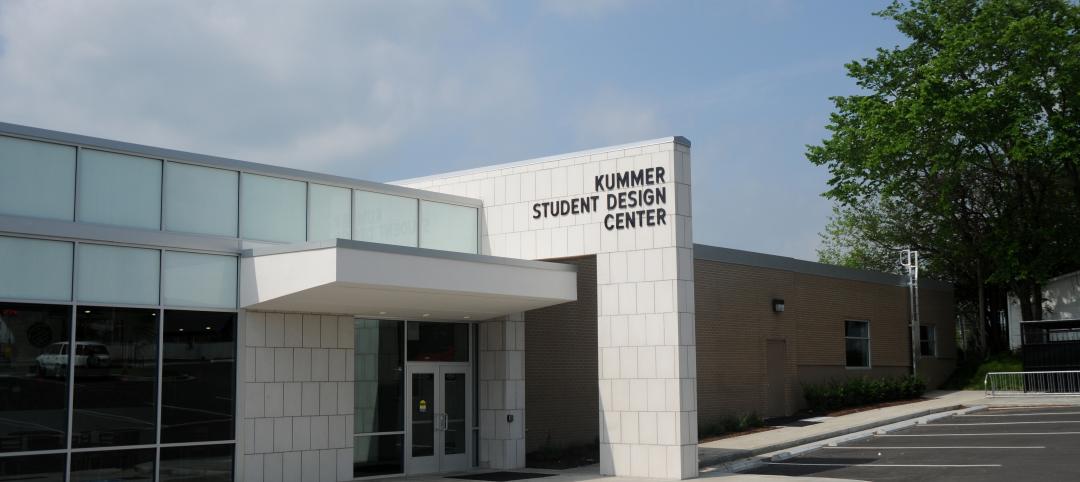HIGHER ED’S ‘EDIFICE COMPLEX’
Describing American colleges and universities as suffering from an “Edifice Complex,” in 2012 the New York Times reported that, “A decade-long binge to build academic buildings, dormitories and recreation facilities – some of them inordinately lavish to attract new students – has left colleges and universities saddled with large amounts of debt.”
One calculation at the time showed that the amount of campus space per student had nearly tripled since 1974.
It was clear then, as it is now, that this kind of growth is unsustainable. And yet despite deep cuts in state funding and flattening enrollment, this building spree has continued. In 2015, American colleges and universities went on to spend a record $11.5 billion on construction, creating 21 million SF of new space even as they faced a record $30 billion shortfall in deferred maintenance costs on existing facilities.
What’s driving campus growth is clear. As public funding for higher education has fallen and colleges and universities find themselves ever more dependent on tuition dollars, they’ve relied on debt financing to build the kinds of spaces, they hope, will attract and retain more students (State of Facilities in Higher Education).
With COVID-19 putting additional pressures on budgets and shutting down or restricting campus access, endless campus expansions are even less tenable. At the same time, the near universal adoption of remote learning in Spring 2020 has opened new pedagogical opportunities that may lessen the demand for more space – not just this year but into 2022 and beyond. Given this confluence of events, it’s likely that colleges’ appetite for new construction will be diminished for the foreseeable future.
A pivot from ever-expanding campuses towards more compact and better-utilized ones cannot resolve the underlying funding issue, but it can help control most colleges and universities’ second largest expense: their facilities. This transition will inevitably involve university architects, planners, and administrators reconsidering—and repurposing—their existing space. There is no one-size-fits-all strategy for managing a campus’s spatial needs. Your institution’s plan needs to reflect its character. However, there are some key considerations to account for when making decisions to ensure the resiliency and adaptability of your campus.

CONSIDERATIONS FOR SMART GROWTH
Mission. Your college or university’s mission should be at the heart of any space planning decisions that are made. What is the mission of the university? How do time and circumstance shape that mission? The answers to these questions should guide your planning process.
Space Typology. It’s important to understand the priority and characteristics of your campus spaces. Your campus likely requires a mix of research labs, learning spaces, libraries, student life spaces, and administrative offices. When evaluating how to develop, allocate, or repurpose campus spaces, you should consider the likelihood that the need for them will endure, the frequency of their use, their relative value to those who use them, and their ability to double as immersive communities.
Space Funding. What spaces are revenue generating? This concern shouldn’t diminish all others, but you also don’t want to interrupt a valuable funding stream. Most universities and colleges have a grant-tracking system in place. Correlating space data with your grant-tracking system can create a useful metric for evaluating a space’s effectiveness.
How are your rooms and buildings paid for? Are you using grants, funding from alumni, donors, etc.? While you may want to repurpose a space (and may be physically be able to do so), it’s important to understand whether it’s reserved or off-limits due to its funding source.
Flexibility, Adaptability, “Repurposeability.” For planning a resilient, robustly-used campus, two key spatial characteristics are flexibility and adaptability. Flexibility is a measure of a space’s capacity to support different uses over the course of a day or week, while adaptability is a longer-term measure of its ability to support fundamental use changes with minimal architectural intervention to the infrastructure. Taken together—and combined with other factors that affect space planning (funding sources, revenue-generation, space utilization data, etc.)—these factors determine what we call the “repurposeability” of a space.
Most colleges plan for flexibility. Some plan for adaptability. Few, if any, bring all of these factors together into a comprehensive analysis that provides a holistic view of an institution’s future space needs. But this type of analysis could help campuses avoid costly expansion or repurposing while existing spaces are underutilized.
DATA-DRIVEN PLANNING
But before you make these decisions, it’s imperative to determine how you can measure the use of existing spaces, and what data you have available—or can generate—in order to evaluate what kinds of spaces you actually need (vs. what you already have). Be resourceful! It may not be simple or centralized as you begin to gather this data, but you’d be surprised how much you already have at hand.
Once data is identified and analyzed, variables can be assigned to key questions and a space’s “repurposeability” can be rated. Spaces can then be plotted along a “repurposeability” spectrum. See example below.

As you begin to measure the “repurposeability” of your space, maintain focus on what factors are influencing the decisions within your college or university and what are the best, most cost-effective, and judicious actions that you can take to forward your institution’s mission.
PREPARING FOR THE FUTURE
While there’s no perfect formula or single answer that will work for all campuses, what has been made clear by COVID-19 is the need for spaces that can change to meet changing needs. Further, the reliance on data to make informed decisions is critical – and although you may have some segment of this data now in an ad-hoc collection of systems or spreadsheets, you should consider how to make that data usable for all your space planning needs. As your institution continues to repurpose existing spaces or build new ones, it’s also advisable to develop a plan for generating and storing space-related data in a centralized, easily accessible, and user-friendly format to simplify this process in the future.
If COVID-19 and its impacts on the spring and fall semesters of 2020 has taught us anything, it’s that it is impossible to predict future events. But data-driven planning that integrates the concept of “repurposeability” can help universities manage the financial, social, and pedagogical impacts of an unpredictable future.
Related Stories
| Sep 12, 2011
Living Buildings: Are AEC Firms up to the Challenge?
Modular Architecture > You’ve done a LEED Gold or two, maybe even a LEED Platinum. But are you and your firm ready to take on the Living Building Challenge? Think twice before you say yes.
| May 18, 2011
Major Trends in University Residence Halls
They’re not ‘dorms’ anymore. Today’s collegiate housing facilities are lively, state-of-the-art, and green—and a growing sector for Building Teams to explore.
| May 18, 2011
Raphael Viñoly’s serpentine-shaped building snakes up San Francisco hillside
The hillside location for the Ray and Dagmar Dolby Regeneration Medicine building at the University of California, San Francisco, presented a challenge to the Building Team of Raphael Viñoly, SmithGroup, DPR Construction, and Forell/Elsesser Engineers. The 660-foot-long serpentine-shaped building sits on a structural framework 40 to 70 feet off the ground to accommodate the hillside’s steep 60-degree slope.
| Apr 13, 2011
Duke University parking garage driven to LEED certification
People parking their cars inside the new Research Drive garage at Duke University are making history—they’re utilizing the country’s first freestanding LEED-certified parking structure.
| Apr 12, 2011
Rutgers students offered choice of food and dining facilities
The Livingston Dining Commons at Rutgers University’s Livingston Campus in New Brunswick, N.J., was designed by Biber Partnership, Summit, N.J., to offer three different dining rooms that connect to a central servery.
| Apr 12, 2011
College of New Jersey facility will teach teachers how to teach
The College of New Jersey broke ground on its 79,000-sf School of Education building in Ewing, N.J.
| Mar 23, 2011
After 60 years of student lobbying, new activity center opens at University of Texas
The new Student Activity Center at the University of Texas campus, Austin, is the result of almost 60 years of students lobbying for another dedicated social and cultural center on campus. The 149,000-sf facility is designed to serve as the "campus living room," and should earn a LEED Gold certification, a first for the campus.
| Mar 18, 2011
Universities will compete to build a campus on New York City land
New York City announced that it had received 18 expressions of interest in establishing a research center from universities and corporations around the world. Struggling to compete with Silicon Valley, Boston, and other high-tech hubs, officials charged with developing the city’s economy have identified several city-owned sites that might serve as a home for the research center for applied science and engineering that they hope to establish.















